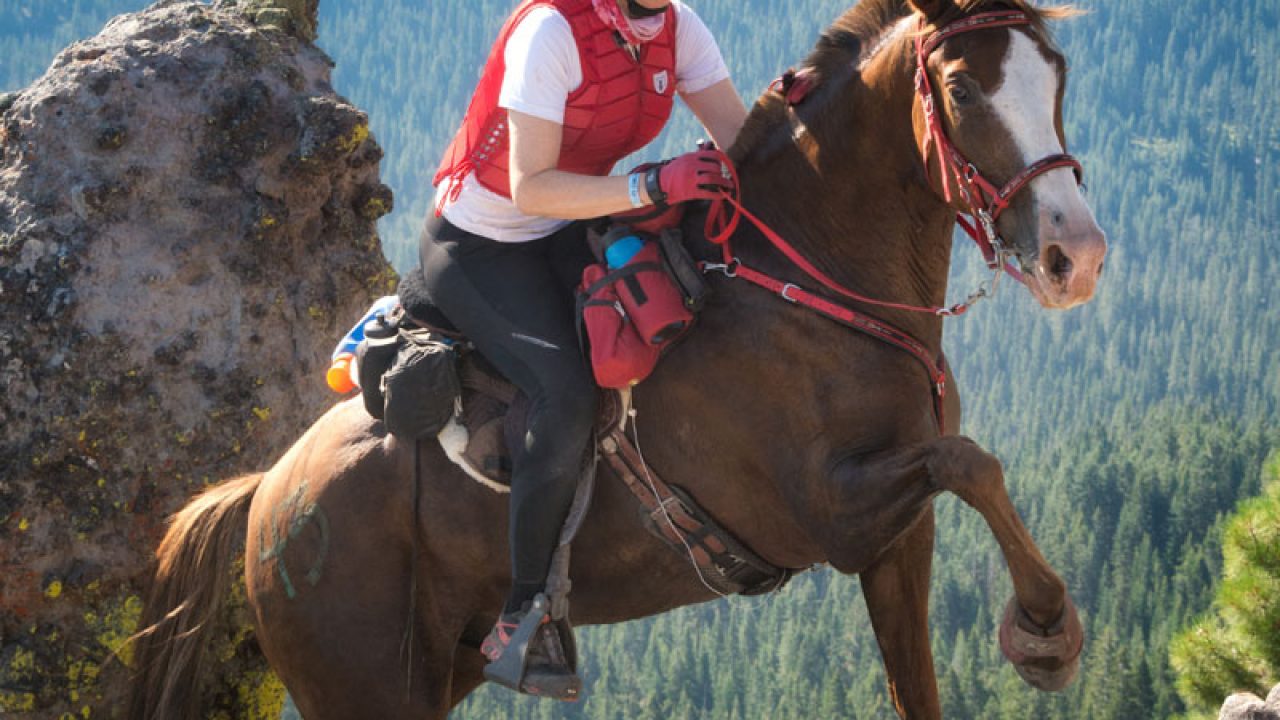History
Information on this page was aquired from the Endurance Primer. Sadly the site no longer exists.

Information on this page was aquired from the Endurance Primer. Sadly the site no longer exists.

From its beginnings as a necessity, Endurance Riding is now a fully fledged sporting discipline. As horses used to be the main form of transportation, it was only natural to seek a horse that was fit and healthy and had the predisposition to long distances. In modern day competition, the emphasis is placed on the horse finishing in good condition, rather than who finishes first. This explains the stringent rules with regards to veterinary checks through out the race.
Modern competitions consist of a number of sections known as ‘phases’. At the end of each phase, there is a compulsory halt for veterinary inspection. Each horse, which is thoroughly examined before it is allowed to start the ride, must be presented for inspection within a set time of reaching each vetgate. The time spent at each vetgate prior to inspection by the vets is counted as part of the overall competition time and the aim is to determine whether the horse is fit to continue the ride. Any excessive over-riding of a tired horse or any other action that can be defined as cruelty is penalised by disqualification. An Endurance ride is a timed test against the clock of an individual horse/rider team’s ability to traverse a marked, measured cross-county “trail” over natural terrain consisting of a distance of 50 to 100 miles in one day.
Endurance riding was first developed in the early 1900s as a military test for cavalry mounts. Horses were required to go on a 5-day, 300 mile (483 km) ride carrying at least 200 lbs. The cavalry test became a civilian sport in the early 1950s. Over time the reduction of distance and time increased the number of riders and rides, and in 1978 the Federation Equestre Internationale (FEI), the international governing body for World and Olympic equestrian events, recognized endurance riding as an international sport. In 2006 over 353 FEI endurance competitions were held in Europe, Asia, and the American continents incorporating over 49 countries worldwide.
The modern endurance ride is unique in the horse sport world as being one of the only group/individual sports that entire families can participate in by riding together as a group during the ride, yet compete as individuals. There is no rider minimum or maximum age limitation, and the CERC awards program also offers special awards to families who have compiled the most miles in riding together.
Horses are required to pass a pre-ride vet check for soundness before they are allowed to start. Endurance rides have manditory "holds" during the ride where horses must pulse down to meet a specific heart rate parameter -- anywhere from 60 to 68 bpm (beats pr minute) -- before they are then checked by qualified veterinarians to ensure the horses are fit to continue. Horses that do not pulse down within a specified time, or fail to pass the vet check, are pulled from the competition. Because of the nature of this sport every caution is taken to ensure the safety and health of the horses.
The ride begins as a group start when the trail is "opened" at a specific time to all riders in each mileage division. The riders are then free to go at their own pace throughout the ride as long as they do not exceed the time limit for their ride distance, or the cut-off times (if applicable) for the vet checks. Riders may run, walk, or jog alongside their horses at any time throughout the ride. Endurance is a strategic test of horsemanship. Riders are challenged with regards to effective use of pace and thorough knowledge of abilities and level of fitness of their horse against the difficulty of the course/terrain/weather. All riders must conduct themselves according to CERC code of conduct.
A rider can take up to a year or more to train themselves and a horse to be ready to compete in a 50 mile ride, and several years to compete in a 100 mile ride or an FEI level event.It can take years for a combination to be ready to compete in a 160 km ride. Endurance requires extensive preparation and a deep knowledge and understanding.
Endurance is open to all equine breeds (horses, ponies, and mules) that are 5 years and older. AERC has set a minimum age limit of 4 for Limited Distance. Endurance horses must be thoroughly trained and conditioned to meet the demands of the modern endurance competition. Any fit, sound and healthy horse or pony is more than capable of not only completing a ride, but also top-tenning (being among the first ten to cross the finish line and pass the final vetting).
Welfare of the horse is paramount in this sport, and all horses entered must pass a pre-ride examination at the ride site by a licensed veterinarian before they are allowed to start the ride. Horses must also pass additional mandatory vet examinations at specific check-points during the ride, and a final exam within 1 hour after the ride. Any horse showing lameness or failure to meet specified metabolic parameters is immediately eliminated.
Some breeds, like the Arabian horse, are genetically designed for distance and tend to predominate in this sport; but one sees many, many other light breeds out on the trail competing -- and winning -- endurance.
In determining how well your horse will do, it is sometimes best to start with a Limited Distance ride to give you an idea of your horse's capabilities, and then progress upward into Endurance.